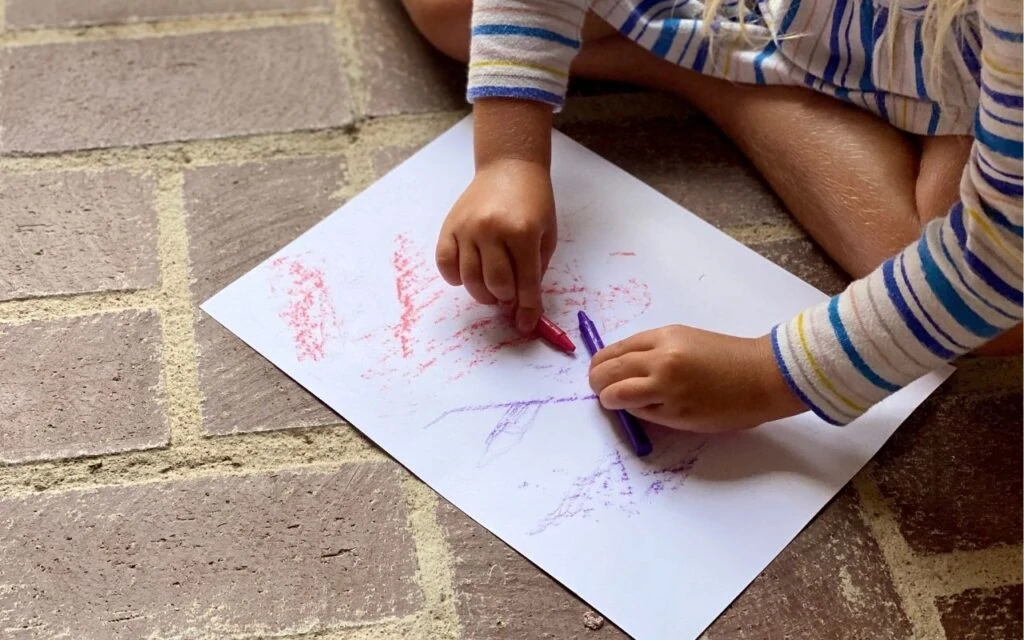The world is full of sensory stimuli. Everywhere we go, there are colors, smells, sounds, and textures.
With this Play Invitation, children can discover a wide variety of textures through one of the oldest forms of printmaking: rubbings.
This is an opportunity to explore the concepts of pattern, line, composition, and structure while developing mathematical skills like classification, fine motor skills, and appreciation for the environment.
What Could Lead Us to This Play Invitation
- Children have been curious about the natural world and making comparisons (size, temperature, color, shape, etc.);
- Children have been grouping things based on shared properties such as color or texture.
Materials Needed
- Crayons, with their labels peeled off, in a variety of colors
- White paper (not too thick)
Setting up This Play Invitation
- Gather the materials in a basket or bag.
- Choose a place to take the children that is rich in textures, both natural and man-made.
Tips: Take a small broom with you as some surfaces may have dirt on them.
How to Create the Rubbings
- You can start by demonstrating how to rub a crayon on its side over a surface, such as concrete, to capture markings while holding the paper with your other hand.
- Invite children to rub a crayon over the top of a textured surface to capture the raised elements of that surface.
- Let the children explore the different texture markings they can capture in the environment around them!

Optional next step: Invite children to reflect on the experience: What kind of texture did you capture? Why does that surface have that texture? What did you discover about capturing textures?
How to Nurture the Natural Unfolding of the Child’s Identity During This Play Invitation
- Honor children’s ability to learn through experimentation. You may have children who want to make rubbings of “non-textured” surfaces. Let them discover for themselves what happens. Some children are satisfied with the rubbing process, and don’t care much about the texture. Trust their process and do not correct them.
- Children have the right to participate in experiences just for the sake of it. There will be children who struggle to use the crayon properly for a true “texture” capture. If they are not complaining or do not notice, and they are enjoying the process – let them be.
- Children have the right to experiments that are not new to us adults. We cannot forget that children are seeing and experiencing many things for the first time. What may be “old hat” to us can be fascinating and new to children.
The Academic Learning Opportunities
- MATH: Explore concepts of pattern, line, and shape.
- LANGUAGE: Learn new vocabulary, like tree bark, raised, texture, print, rubbing, leaf vein and stem, pattern, and repetition.
- PHYSICAL: Develop fine motor and observation skills.
- SCIENCE: Develop a sense of natural patterns and structures.
- ART: Explore a printing technique and a design element: texture.
Extensions
Go on a texture hunt and invite children to collect things from around the classroom and from their homes to make rubbings like placemats, shoe soles, and doilies.
Book Recommendations

A remarkable book that explores textures in everyday life.

A gorgeous book by a photographer showing different textures in our everyday life.

Young artists will “feel” inspired as they explore texture in famous works of art.

